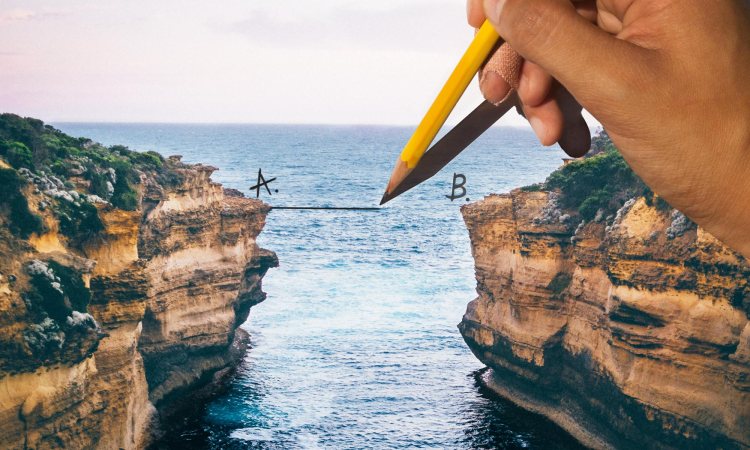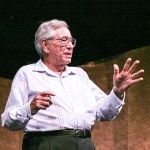
Robert Fischell invented the rechargeable pacemaker and the implantable insulin pump — not to mention helped create the precursor to GPS. The 87-year-old shares a peek into his creative process.
Perhaps you have a family member who’s alive because of a flexible coronary stent. Or a friend who manages her diabetes with an implantable insulin pump. Or, even more likely, maybe today you used an app on your smartphone to get directions, plotted with the help of GPS.

If any of the above is true, you can thank Robert Fischell, intrepid inventor and winner of the 2005 TED Prize. A longtime satellite engineer, Fischell helped create a key antecedent to GPS before turning his attention to medical devices in the 1970s. Today, he holds more than 200 patents in the US, from the implantable cardiac defibrillator to SpringTMS, a device recently approved by the FDA for the treatment of migraines. This year, at age 87, Fischell received the National Medal of Technology and Innovation from Barack Obama. But he doesn’t plan to slow down — in fact, he’s working on his most ambitious idea yet. He shares his best tips on how to solve a thorny problem.
Take your know-how into new arenas. Fischell loved engineering satellites. “It never seemed like work to me — it felt like a game and, you might not believe this, they paid me for it,” he says. But one night about 40 years ago, he was reading a trade magazine when he stumbled on an ad for a pacemaker battery bragging about how it lasted for two years. “I looked at that and said, ‘Wait a minute — this is in somebody’s chest! It lasts two years and they’re proud of it?!’” At the time, people with pacemakers had surgery every other year to replace their batteries. “I thought, ‘What we need is a tiny nickel-cadmium cell on a coil of wire inside the pacemaker that’s rechargeable by magnetic induction through the skin. It’d last the patient’s lifetime.’” Fischell tasked a group of engineers in his Applied Physics Lab at Johns Hopkins University to create a prototype. It wasn’t just rechargeable, it was also smaller than existing models. Working with a surgeon at the university’s hospital, Fischell built a company to produce this new device and, within a year, they’d installed the rechargeable pacemaker in 1,700 patients. And the batteries lasted.
Listen to people and let your mind go wild. After the rechargeable pacemaker, Fischell started work on an implantable cardiac defibrillator. He realized that, like a satellite, this device could be programmed by radio waves — and he was in the operating room when the first one was implanted in a patient in 1980. From that moment on, Fischell was hooked on inventing medical devices, and he finds inspiration by talking to people about their medical hardships. “When somebody tells me a problem, my mind begins to see solutions,” he says. As Fischell shared in 2005, he didn’t realize how debilitating migraines were until he talked to people who experienced them several times a week. He wondered: could electrical current disrupt a migraine? The idea led to the development of SpringTMS, a portable transcranial magnetic stimulator that can be applied to the head at the start of a migraine. The device was approved by the FDA in 2013. “It’s very satisfying to see how it is helping people,” says Fischell. “There’s something very personal about improving the lives of humans.” The most recent clinical trial looked at what happens when the device is used daily, as opposed to when needed. “With two pulses every morning and evening, the number of migraine headaches you get can decrease significantly,” he says.
When something works, look at how it might apply elsewhere, too. Fischell loves spin-offs. The implantable defibrillator worked by monitoring the electrical signal of the heart and delivering a course-correcting burst of electrical stimulation anytime the rhythm changed. Fischell suspected that the same principle could treat epilepsy, and developed the responsive neural stimulator (RNS), a small device implanted directly into the skull to monitor the brain’s electrical signals. When it notes an abnormal signal, it sends electricity to prevent a seizure. The RNS system was approved by the FDA in 2013, after clinical trials showed that patients experienced a 38% reduction in the number of seizures per month. Yet that’s not the end of the story. Fischell now wants to see how scientists might use this technology to treat other brain disorders such as depression or obsessive-compulsive disorder.
Don’t be afraid to think big. Really big. Fischell’s latest idea sounds like science fiction. “I’m working on a method to remove all human pain, with no drugs or side effects, in a ten-minute treatment,” he says. “I know that sounds crazy, but I believe it’s going to work.” He has designed a device to fit on your lower back, knee or neck — anywhere you experience chronic pain — and deliver targeted magnetic pulses. “By Faraday’s law, the pulses turn into an electrical current in the body,” he says, “and we believe they will destroy or confuse the electrical signal from the pain neurons to the brain.” Clinical trials have begun at the University of Maryland School of Medicine. If the device functions as expected, it could help the 100 million people in the United States who suffer from chronic pain — and potentially also decrease painkiller addiction. “When you have a medical device that’s creating a magnetic pulse on your back, the only thing treated is your back. When you take a pill for back pain, that pill goes through your entire body, and there’s a risk as that chemical acts on different cells,” he says. “I’m looking forward to advertising our pain device on television, and while everybody’s waiting for the list of adverse side effects, we won’t have any.”
Think about those who come behind you. Fischell works with three notable partners: his sons, a physicist, a cardiologist and an MBA. The family enterprise wasn’t exactly by design, but it also wasn’t an accident, says Fischell. “The thing with kids is they see that you love what you’re doing, and they get the spirit.” Now, he’s expanding on that idea, having donated the money for Clark Hall at the University of Maryland. Home to the Fischell Department of Bioengineering and the Robert E. Fischell Institute for Biomedical Devices, the building is named after a friend who died of congestive heart failure in 2015. The secret goal of the building? To inspire students to create a product that might have saved his friend’s life. “I believe we can make a device that will prevent deaths from congestive heart failure,” he says. “I’m looking to give ideas to undergraduate and graduate students.”
Innovate for people, not profit. “A lot of people think the purpose of a patent is to make the inventor wealthy, but that’s not why the US created the patent system,” he says. “The purpose of the patent system, as I see it, is to reveal trade secrets so that commerce and technology advance.” That’s why he’s thrilled that tomorrow’s inventors will revise, remix and surpass his work — and save more lives as a result. But Fischell’s real secret for success? Says the still-hard-working octogenarian, it’s all down to the fact that he’s kept at it. “With 60 years of dedicated work,” he says, “anybody could do it.”











